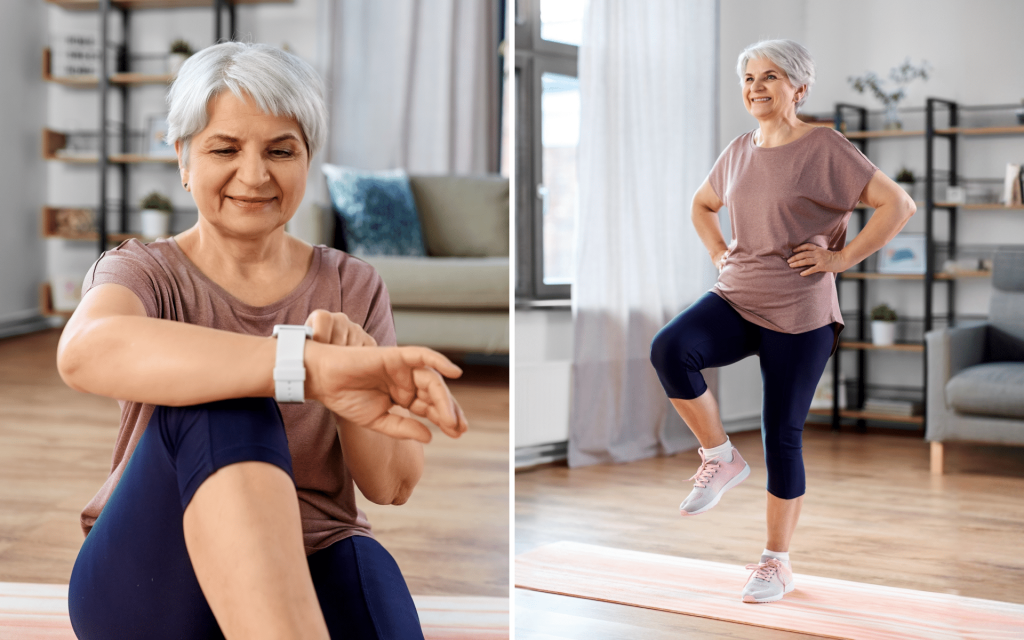Why indoor walking matters for seniors
Staying active becomes more important as we age, but it can also feel more challenging. Many seniors want to exercise but may face obstacles like bad weather, unsafe sidewalks, or limited access to outdoor spaces. Indoor walking offers a safe and comfortable way to keep moving without leaving home. It is gentle on the body, easy to begin, and can be done at your own pace. Most importantly, it keeps the heart healthy, strengthens muscles, and helps maintain independence for daily living.
The health benefits of indoor walking
Walking is one of the simplest and most effective exercises, and doing it indoors carries the same benefits as walking outside. Regular walking helps keep the heart strong by improving circulation and lowering blood pressure. It also supports healthy joints, which is important for those who may deal with stiffness or arthritis. Walking indoors improves balance and reduces the risk of falls, while also boosting energy levels and mood. Beyond physical health, indoor walking can help reduce stress and improve sleep, making it a powerful tool for overall well-being.
Making indoor walking enjoyable
One of the best things about indoor walking is that it can be personalized. Seniors can walk around the house, through a hallway, or in place in front of the television. Some may enjoy turning on music and walking to a rhythm, while others may prefer following a guided walking video. Making the activity enjoyable is key to keeping it consistent. Adding variety, such as changing pace or walking in different rooms, helps keep it interesting and prevents boredom.
Creating a safe walking space at home
Safety should always come first. Before starting an indoor walking routine, it is important to look around the home for any possible hazards. Clearing pathways, removing loose rugs, and ensuring good lighting can prevent trips and falls. Comfortable shoes with good support can make a big difference in protecting the feet and joints. Some seniors may also benefit from walking near sturdy furniture or handrails for extra support, especially when starting out. A safe space builds confidence and allows walking to feel more relaxed and enjoyable.
Finding the right pace and routine
Walking indoors does not need to be intense to be effective. The key is finding a pace that feels comfortable and allows steady breathing without strain. For some seniors, starting with just five or ten minutes a day is enough, gradually increasing as strength improves. Others may enjoy longer sessions, especially when combined with music or television. Consistency is more important than speed or distance. Even small amounts of daily walking can add up to big health improvements over time.
Adding variety to indoor walking
To keep things engaging, seniors can mix in different types of walking. Marching in place, side steps, or gentle arm movements can make the routine more dynamic. Some may enjoy following walking programs available online, which often include simple movements that combine walking with light stretching. Using a pedometer or step counter can add motivation by showing progress and giving a sense of achievement. Variety keeps the routine fresh and helps the body stay active in new ways.
The role of indoor walking in daily life
One of the greatest advantages of indoor walking is how easily it fits into daily life. Seniors can walk while waiting for food to cook, during television commercials, or while listening to the radio. It does not require special equipment or a large space. Walking indoors can also be social. Family members, caregivers, or friends can join in, making it an enjoyable group activity. For those who live alone, it can bring a sense of structure and purpose to the day, while also boosting physical and emotional health.
Overcoming barriers to exercise
Many seniors feel discouraged about exercising because of pain, limited mobility, or fear of falling. Indoor walking can help overcome these barriers. It allows movement in a safe and familiar environment, where you can stop and rest whenever needed. Unlike outdoor walking, there are no concerns about weather, uneven ground, or crowded spaces. This makes it a flexible choice that removes many of the common worries about staying active. With time, indoor walking can build strength and confidence, which may even make other forms of activity feel easier.
Combining indoor walking with other healthy habits
Indoor walking works best when combined with other healthy lifestyle habits. Staying hydrated, eating balanced meals, and getting enough sleep all support the body’s ability to stay active. Some seniors may enjoy pairing their walking routine with stretching exercises, which improve flexibility and ease stiffness. Listening to uplifting music or practicing deep breathing while walking can also enhance relaxation and mood. By combining walking with other small, healthy choices, seniors can create a routine that supports both body and mind.
The emotional benefits of walking indoors
Exercise is not only about physical health—it also has a big impact on emotional well-being. Walking indoors can reduce feelings of loneliness and give a sense of accomplishment. Even a short walk can lift the mood by releasing endorphins, the body’s natural feel-good chemicals. For seniors who may sometimes feel isolated, walking can bring a sense of activity and movement into the day, making life feel brighter and more fulfilling.
Conclusion
Indoor walking is a simple yet powerful way for seniors to stay active, healthy, and independent. It offers the same health benefits as outdoor walking but in the comfort and safety of home. By creating a safe space, finding a comfortable pace, and making walking enjoyable, seniors can turn this gentle exercise into a daily habit. Over time, the body becomes stronger, the mind feels clearer, and energy grows. Walking indoors is more than just a routine—it is a step toward greater wellness, confidence, and joy in everyday life.

